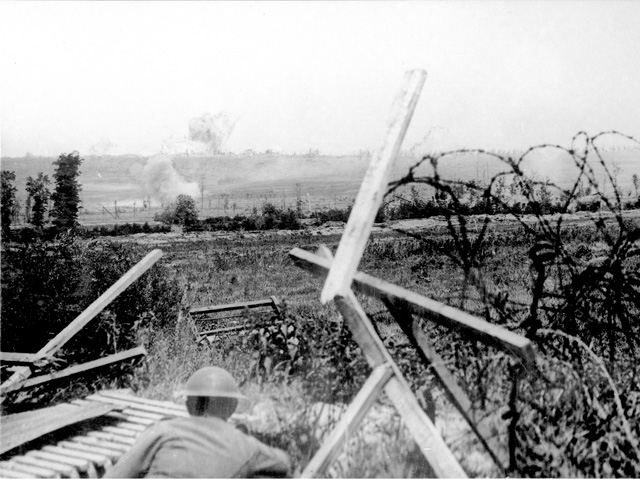Description
Title: The Ridge – The Anzacs Story of the Battle of Messines, 1917
Author: Deayton, Craig
Condition: Mint
Edition: 1st Edition
Publication Date: 2014
ISBN: N/A
Cover: Hard Cover with Dust Jacket
Comments: Craig Deayton, author of “Battle Scarred – The 47th Battalion in the First World War” is currently writing is long awaited title about the Battle of Messines and with a focus on the involvement of the Australian and New Zealand soldiers of the I & II ANZAC Corps.
Craig has advised us that he is always keen to hear from anyone with pictures or information relating to the battle or the soldiers who were involved in it so if you can assist him, please contact us on either 07-3865-2615 or via email info@regimental-books.com.au.
In the mean time, please subscribe to the Back in Stock Notification to be advised via email when this book becomes available.
In mid-1917 the war was not going well for the Allies. The great French offensive of May under General Robert Nivelle had achieved little and there were mutinies in the French army which led to Nivelle being replaced. Russia was in disarray; the imperial government had been overthrown in March and events were unfolding that would ultimately lead to the seizure of power by Lenin and the Bolsheviks in November, and the country’s withdrawal from the war. April 1917 had been the worst month of the war for the sinking by German submarines (U-boats) of merchant ships bringing essential war material to Great Britain, and it seemed that German unrestricted submarine warfare might indeed be working. (This German policy did cause the United States to enter the war on the Allied side but it would be more than a year until the American Army could arrive in any strength in France.)
In this situation it was the British who took the initiative on the Western Front. Sir Douglas Haig, the commander of the British Expeditionary Force, in which the Australian Imperial Force was serving, planned a major campaign in Belgium known as the ‘Flanders Offensive’. The overall aim was to breakthrough east of Ypres (Ieper) and drive the Germans from the Belgium coast. One advantage claimed for this was that it would deprive the German submarines of their bases in Belgium. Apart from that, success would, in the thinking of the time, ‘wear down’ the German Army and hopefully spread discouragement in Germany itself.
The first stage in the ‘Flanders Offensive’ was the proposed capture of the Messines-Wytschaete ridge south of Ypres where there was a large enemy salient, or bulge, into the Allied lines. If the line was not straightened here, a later attack towards the east from Ypres would create an ever lengthening German line to the south from which artillery could fire into the British flank. For what became known as the Battle of Messines the British prepared the most detailed plan ever for a major British offensive. Artillery targets were carefully plotted and an immense creeping barrage of artillery and machine-gun fire was designed to move ahead of the infantry. Huge models of the ground were built and studied by the troops, especially those in the Third Australian Division commanded by Major General John Monash.
For two years British and German tunnelling companies had manoeuvred and fought an underground war in the Messines area. The British succeeded in concealing from the Germans that they had pushed 19 tunnels deep below the German front-line trenches. From November 1916, the oldest mines, three kilometres south-east of Ypres at Hill 60, were the responsibility of the 1st Australian Tunnelling Company. Their work involved tense fighting, explosion and counter-explosion in the network of tunnels, to keep the enemy away from the deep mines.
The preliminary artillery bombardment at Messines commenced on 31 May 1917. The Germans reacted with heavy shelling including phosgene gas shells fired into areas that attacking troops might have to pass through moving up to their start lines. Throughout the night of 6 June, Ploegsteert Wood, through which battalions of the Third Australian Division approached their jump-off lines, was saturated with gas shells temporarily putting 500 men out of action.
At 3.10 am on 7 June, the rate of artillery barrage increased and 19 great explosions obliterated the German front-line trenches. Infantry from nine divisions then moved across no-man’s-land. The mines destroyed German positions and shattered German morale in the forward area. The infantry met tough resistance at some ruined farms and for the first time, Australians came upon concrete block-houses which became known as ‘pillboxes’. However, by 5.30 am Messines village had been captured by the New Zealand Division and the main heights were taken along the whole battlefront. As troops consolidated the newly won positions to prepare for the expected German counter-attacks, more troops came forward for the afternoon attack.
Men of the Fourth Australian Division assembled in the area taken by the New Zealand Division in the morning. They were supported on the south by the Third Australian Division. There was a serious hitch in the plan when the British, who were to advance north of the Australians, were late arriving at the start line. Captain Arthur Maxwell in charge of the Australian left flank company ordered his men to occupy the whole of the British objective in the Oosttaverne Line which fortunately the Germans had abandoned. The extension of the Fourth Division’s left flank opened a gap in the centre and the Oosttaverne Line was not completely taken until after four days and nights of fighting.
The Battle Messines was a ‘stunning success’. It removed the German salient south of Ypres and paved the way for the main offensive to commence on 31 July 1917. However, the two Australian Divisions suffered nearly 6800 casualties.





